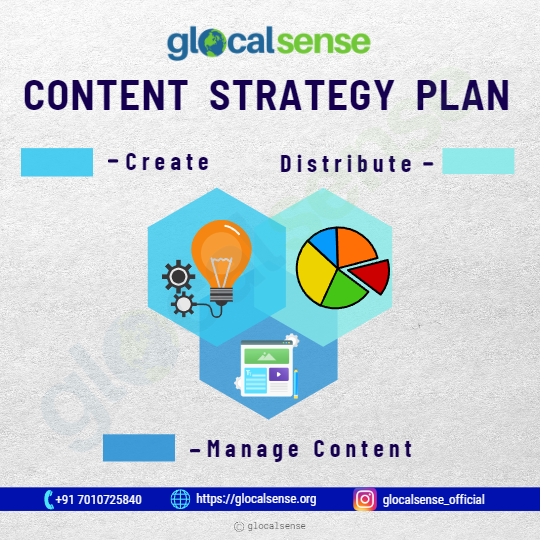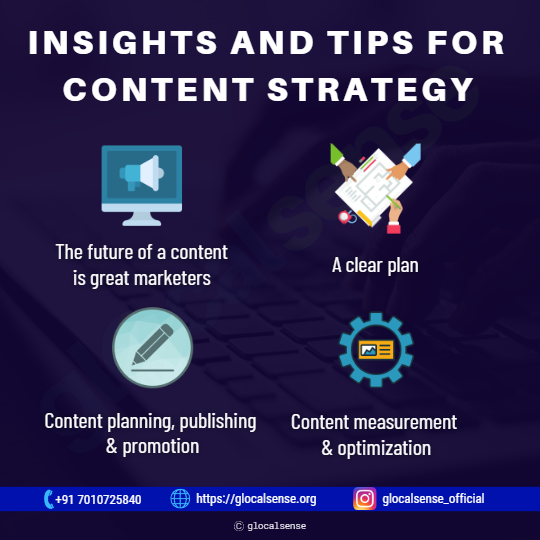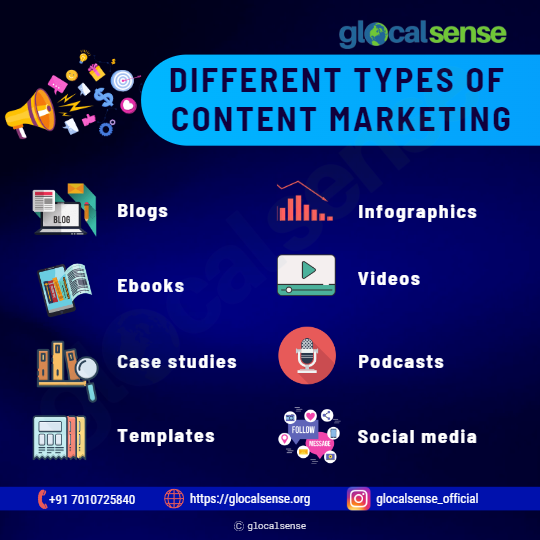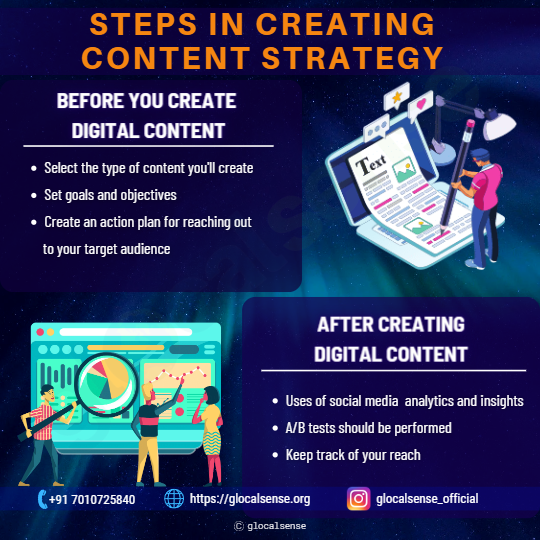Content marketing can drive traffic and attract potential customers to your website. But not by itself. It’s a waste of time and effort to publish content without a strategic plan in place. You’ll need a thorough and actionable digital content strategy to get the results you want. The approach becomes the basis for everything you do after that.
Strategies give direction, purpose, and a sense of how you’re going to get there. Your brand will not reap the benefits of content marketing unless a solid foundation is in place. So, let’s discuss how to create a successful approach.
An Idea about Digital Content Strategy
Experts in the field have provided numerous definitions of content strategy. At the basic level, a content strategy serves as a roadmap for what, why, and how content should be generated within an organization to achieve its objectives. A strategy that is just not abstract; it’s concrete. It provides a detailed foundation for all areas of a company’s content. A subset of this is digital content strategy, which focuses on how an organization could offer content through many of its online digital platform accounts.
An organization’s content marketing journey should ideally begin with a strategy. However, that doesn’t mean the approach is static. It will change as your goals change. It will also change once you have content analytics in place to help you figure out what works. Finally, it can evolve as your audience’s needs change.

While it’s easy to assume that every company that creates content has a plan, this isn’t the case. For example, only 65% of content marketers stated a defined strategy in the Content Marketing Institute’s (CMI) 2019 B2B Report.
Importance of having a Content Strategy
Content marketing starts with objectives and progresses via research, themes, key message, and customer personas in a cycle. A content marketing strategy is a dynamic thing that changes all the time. It’s a constantly evolving set of norms, objectives, and ideals. Your content will vary as your buyers, industry, and items change. That is why developing a long-term content marketing plan is critical. This plan lays out how you’ll create, distribute, and manage content. It isn’t static, like any other business approach. Instead, it’s intended to evolve. Both internal and external events will prompt this transformation.
Change is not something that content marketers are worried about. However, they are well aware that it is necessary. To address the pandemic and all of its effects, you’ve probably had to switch your content marketing quickly. Of course, this is a universal case. Others, depending on your vertical and target, will be less wide and more specialist. However, because change is unavoidable, it’s good to plan with a consistent content marketing approach.
Content marketing is a long game. It is something that businesses are constantly improving to attract new clients and retain existing ones. For large teams, having a strategy to maintain consistency in content marketing and align each piece with customer needs is even more important. It allows everyone to be on the same page and understand the content’s big-picture goals.
Key benefits of a Digital Content Strategy:
- It brings your team together around your objectives and goals.
- It assists you in determining which types of content to create.
- It keeps your team focused on the most critical priorities.
- It helps you in allocating resources to achieve better results.
- It defines your intended audience (s).
Insights & Tips for Content Strategy
Content marketing will only become more complicated in the future. Everything from company objectives to audience personas, strategy to keywords, channels to analysis, and beyond is covered in this subject. With technological disruption, content overload, and decreasing attention spans, you’ve got yourself a heavy panic attack. Below are some tips and insights for a proper Content Strategy:

- The future of content is great marketers: Get exclusive insights and inspirational guidance from some of the industry’s finest minds.
- A clear plan: The majority of businesses lack a clear content strategy. With the help of an innovative, goal-oriented plan, you can buck the trend.
- Content Planning, Publishing, and Promotion: If you follow guidelines for a seamless and productive process, your workflow will be as smooth as a hoverboard ride.
- Content measurement and optimization: Building a long-term content optimization engine necessitates continuous improvement and expansion.
Different Types of Content Marketing
These are the eight most common types of content marketing for your readers and customers that you can develop.

1. Blog Post:
You’re currently reading a blog article if you haven’t noticed. Blog posts are everlasting on a website and should be updated regularly to attract new visitors.
Posts should give your audience quality content that encourages them to share them on social media and other websites. Blog posts should be between 1,000 and 2,000 words long, but you should try to find whether your reader prefers longer or shorter reads.
2. Ebooks:
Ebooks are lead-generation tools that potential customers can download after providing their contact information on a lead form. They’re usually lengthier, more detailed, and published less regularly than blog postings, written to draw people to a website.
3. Case Studies:
Case studies provide you the opportunity to tell the story of a customer who worked with you to solve a problem. Because it can take many different forms, a case study is possibly the most versatile type of content marketing.
In a case study, you want to show customers who are considering buying your product that the proof is in the pudding. By selecting customers for a case study, develop a format for the testimonial based on the domain of your company to which you’re trying to add value.
4. Templates:
Templates are a great content format to consider because they help generate leads while providing excellent value to your audience. In addition, when you provide your audience with template tools to help them save time and succeed, they’re more likely to engage with your content in the future.
5. Infographics:
Data may be organized and visualized more attractively with infographics than with words alone. These are excellent content formats to consider if you need to convey much information clearly and understandably.
6. Videos:
Videos are a popular form of content that can be shared across social media platforms and websites. Unfortunately, videos require more prolonged effort and resources to create than written material. Still, as visual marketing becomes longer — after all, it’s 40 times more likely to be shared on social media than other sorts of content — it’s a medium worth trying out.
7. Podcasts:
Suppose your audience doesn’t have time or interest to read content every day. Start a podcast to assist them in discovering your business. The number of people who listen to podcasts is increasing. Podcasts are great marketing tools because they allow businesses to access a niche audience. Podcasts assist in hyper-targeting viewers and provide a positive return on investment. Listeners gain value from podcasts since they are frequently informative and educational.
8. Social Media:
However, it is critical to use social media to expand your brand’s reach and deliver your information to your customers where they spend their time. Facebook, Instagram, Twitter, LinkedIn, Pinterest, Snapchat, and YouTube are few social media platforms where major businesses frequently publish. It is important to post the type of content your followers expect to see when starting a business account on any social network.
What the numbers say about using a Digital Content Strategy for your Content Marketing:
According to, “content development challenges” were cited by 63 percent of marketers as a reason for their company’s lack of success in the previous year. (On the other hand, having a strategy in place eliminates the element of chance from content creation.)
Another 51% claimed they had “strategy concerns in general.” (When done well, a digital strategy should run in the background.)
79 percent of content marketers have a documented or undocumented digital content plan in place. Only 17% do not have one, but plan to do so within the year.
Only 4% have no strategy in place and have no intentions to develop one in the future. (This says a lot about how important strategy is to marketers, even if their knowledge of it is lacking.)
Steps in Creating a Digital Content Strategy
Although there are some fundamental principles that makes a good content strategy, it ultimately relies on your company’s demands. Yes, you want to move leads through the funnel and keep them coming back, but why? All the business content generated should assist you in achieving your company goals.

Most businesses’ goal should be to increase sales; however, depending on the product or service you’re offering, your content approach may change from company to company.
A content strategy for one organization might concentrate on written material that targets many SEO keywords. Another company’s approach may focus on video content or podcasts. A content strategy should be unique to your business.
- Before You Create Digital Content:
Content creation is driven by content strategy. So, before you start creating content, you should think about a few strategic decisions, such as:
1) Select the type of content you’ll create:
You may create a variety of different types of content for your brand. Infographics, logos, press releases, pitches, whitepapers, case studies, landing pages, SEO pages, and blog entries. These are the most frequent and valuable types of content. Each serves a different purpose. Aligning the type of content you create with desired outcomes is one of the keys to an effective strategy.
2) Set goals and objectives:
Your strategy should ideally identify specific content goals such as increased SEO value, more backlinks to your website, increased readership, increased engagement, more leads, and so on. An editorial calendar is a helpful tool for keeping track of your content and goals.
3) Create an action plan for reaching out to your target audience:
What method will you use to distribute the whitepaper? With your contributed article pitch or press release, which publications do you want to target? These are the kinds of questions you should be asking yourself before you start writing. Content distribution and amplification are essential components of content strategy. Today’s omnichannel marketing environment is the most effective marketing strategy to identify numerous channels and touchpoints for high-value content.
- After Creating a Digital Content:
When it comes to optimizing their digital content and content strategy, many organizations fall short. However, optimization is necessary for evaluating outcomes and making modifications to improve your content’s impact on the target audiences.
1) Uses of social media analytics and insights:
Social media boosts brand awareness, builds a loyal base of supporters, and allows you to interact with your audience (s). After you’ve shared content on social media, the following step is to evaluate its effectiveness. Did you achieve the desired outcomes? Was your content popular, well-received, and thought-provoking? If not, look at what went wrong more closely. Was it because of the content? Are you sure you didn’t share it with the wrong network? By identifying the social shortcomings in your content, you can receive insights about improving your reach in future social content efforts.
2) A/B tests should be performed:
A/B testing is a simple method of evaluating changes to your content, such as a new landing page. It verifies whether the change increased conversion rates, eliminating the guesswork from website optimization. You can enhance sales, leads, downloads, and more by running A/B testing on essential pieces of content regularly.
3) Keep track of your reach:
KPIs like unique visitors and more comprehensive metrics that show user behavior can help you track your reach. For example, bounce rates, click rates, and heat maps are all helpful tools for figuring out how your audience interacts with your content on a deeper level.
Conclusion
Without a strategy, content marketing is nothing. When you build that foundation, you’ll have a road map and a guide to ROI. It directs you in the right direction and sets the guidance on how to get there.
According to CoSchedule’s State of Marketing Strategy Report, marketers that create and document a digital strategy are 313 percent more likely to report success than those who do not. However, developing a successful content marketing strategy takes work, organization, and creativity.
That’s great! More importantly, it shows the importance of creating a defined strategy for your digital marketing.
